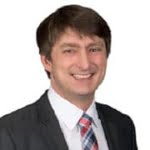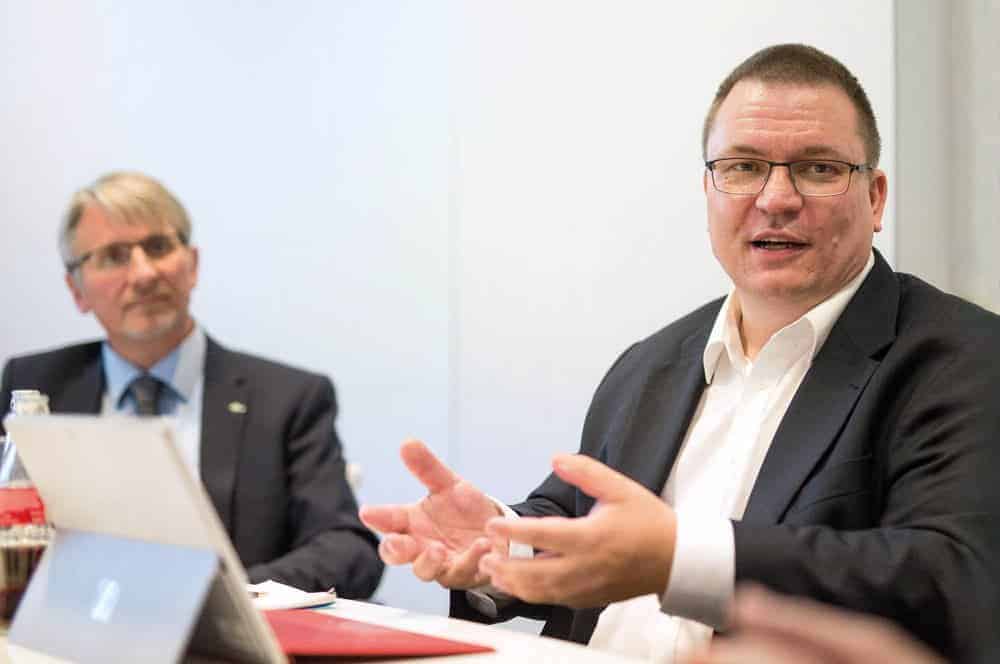Transformation to S/4 and Hana: How to manage?


S/4 is not a paper tiger
Odysseus had ten years to return home from Troy and arrived in his native Ithaca as a beggar. The existing SAP customer only has about five years to live, and he doesn't want to look like a stranded man, but rather a successful change management project.
A "release upgrade" is not a new or unusual situation. Since the successful R/2 days, it has been good practice to customize an SAP system only with the help of experienced consultants and experts. But Hana and S/4 are not just about customizing!
As the report by Heiko Friedrichs, Hinrich Mielke and Achim Zimmermann clearly shows, the requirements are much higher this time. It is the digital transformation of the SAP world. It is not a technical version change.
Business, organizational, technical and licensing aspects must also be taken into account during the transformation to S/4. The use of consultants and experts is a natural procedure for this.
During the "digital transformation" phase, the existing SAP customer requires a great deal of experience and knowledge that is later no longer needed on a daily basis during operations. A correctly configured SAP system is not a perpetual motion machine, but it is a well-oiled machine that only needs occasional blood refreshment.
Bringing in consultants and experts, as represented by the teams from Devoteam Alegri and QPCM, is therefore the natural customizing process in the SAP community. SAP sees it similarly, but the Hana inventor and S/4 provider has made a mistake: Consultants and experts are not available at will, and even their day has only 24 hours.
The very large existing SAP customers have already purchased thousands of man-days from the global consulting companies many months ago. There will be no more resources available here until 2025.
SAP's midmarket partners are to be thanked for having long ago begun to build up Hana and S/4 knowledge at their own expense, which many existing customers urgently need at the moment. Whether SAP should or must turn the time screw in view of the scarce consultant resources will probably not be decided until 2022.
However, waiting is in no way an option. And one more tip for the SAP community. Strictly speaking, this digital transformation involves two topics: Database and ERP.
Hana can be a fantastic, but also challenging database. Achim Zimmermann from QPCM could fill books about it. S/4 is a new ERP model and concept. Heiko Friedrichs and Hinrich Mielke from Devoteam Alegri can prove this with many examples.
In the following text, the topic is briefly explained using the new general ledger as an example. However, the areas of FI/CO and logistics are affected in any case. Accordingly, S/4 is not a paper tiger - on the contrary: it is a challenge that should be given a lot of attention, even with expert support! (pmf)
There is an official deadline with 2025
The problem is that SAP has guaranteed support for ECC 6.0 until 2025. For the time after that, only support for S/4 Hana has been signaled at the current status. This means that the switch to S/4 must be completed in five and a half years.
This period is shorter than it sounds. Similar to the Year 2000 changeover and the euro changeover, it becomes more difficult to obtain qualified personnel as the deadline approaches. This is true internally and externally, as well as globally. The challenge is a similar one: It was not an option to "not go along" with the change to the year 2000 or the euro.
It should also be noted that in addition to the technological strand (change to a new database, possibly a new operating system), business processes and in-house developments must also be considered.
In parallel, questions about the front-end strategy (Fiori) must be clarified, the integration of new cloud-based services and, in general, the consideration and evaluation of cloud options (IaaS, PaaS, SaaS) must be carried out.
All business processes and in-house developments must be put to the test, including those that previously ran outside ECC. In the simplest case, these business processes and proprietary developments are simply adapted to the changed possibilities.
However, this means that the changed opportunities are only incompletely exploited. It is better to familiarize oneself intensively with the new opportunities and make the best possible use of them for the existing business models.
However, these tasks have been known for several years - every CIO or head of SAP will have prepared appropriate solutions and set up a corresponding program management. The effort involved should not be underestimated. They are well invested - and, according to a rule of thumb, can be cut in half with an experienced partner.
However, the main problem is usually the support of the specialist departments: There is a lack of key users, who lack the time and often also the available or granted freedom to "think anew".
In some cases, this leads to the CIO having to push the change to S/4 Hana with his customers, the business departments, and the project is perceived as unloved and thus tends to drag on.
Two areas are directly and immediately affected by the conversion to S/4. In the area of FI/CO, the mandatory conversion to the new general ledger, customer-vendor integration (CVI) and the merging of FI and CO create a considerable need for action.
Established business processes have to be revised, 3rd party applications have to be re-tested and reporting has to be set up from the changed table structure. The improvements can be experienced, the benefits can be felt - accordingly, a change project must be set up.

enough time?
S/4 plus Ariba
Weighty changes also need to be managed in the area of logistics. Here, however, the business benefit is more immediate and thus an ROI is easier to demonstrate. A technically interesting detail is the use of "pull" for short-term status information from 3rd party systems, e.g. the location of goods in transport.
In this way, "pull" replaces the traditional "push" and reduces the system load. Likewise, the integrated connection of Ariba as a procurement platform reduces media discontinuities and processes are designed consistently in the SAP universe.
However, the optimal solution is to establish new and completely changed business processes that are possible due to the new circumstances. However, this requires know-how about the professional and technical possibilities as well as "thinking outside the box".
A partner with an unbiased view will initially accelerate this process immensely and also constantly fertilize it anew due to the external view. Each customer will develop and establish these renewed business processes for itself - this is the only way to gain an advantage over the market competitor.
All these changes will have an impact on collaboration between business, IT and external partners. To achieve the necessary agility, interdisciplinary teams will be required that also understand and ideally also speak the technical language of the respective experts involved.
A classic division into customer and service provider is not promising. Only with collegial equality and a lot of initiative will the change be realized in a goal-oriented context.
This, it should be anticipated, will continue to be a recipe for success for agile and value-creating handling of the new opportunities even after the changeover. Thus, this change is also a change in the organization, the cooperation of different areas and the perception of business contributions.
Devoteam Alegri has a simple, minimally invasive approach using the S/4 Booster methodology to demonstrate the changes and benefits of S/4 to its customers in the shortest possible time. And it does so with the processes, data and workflows from the existing ECC 6.0 system - in a lean S/4 that is connected to the customer's system.

governance included.
S/4 Booster & iHAL
This allows the benefits of S/4 and Hana to be experienced quickly - with your own data and processes. This S/4 can, for example, be deployed from the cloud at short notice (already done with Azure) and set up on-premises if the evaluation is positive.
The benefit is that a business unit can quickly experience the advantage of S/4 with its own data and processes - and thus will support this transformation in terms of content and morale.
Another example is the iHAL (intelligent Hana Assurance List), developed by SAP partner QPCM: SAP Hana is developing rapidly. As with any further development of software, each revision also contains bugs, in addition to improvements and new functions. These can affect both old and new revisions.
Logical software errors are serious because they cannot be caught by any HA solution. To minimize the risks from software errors during Hana operation, the necessary SAP notes must be checked cyclically.
A check of the notes - suitable for the own scenario - can quickly become time-consuming. With iHAL, QPCM has created a tool with which these checks can be carried out quickly, effectively and efficiently.
Cloud, IaaS and Governance
These examples show how technology can help customers move to S/4. Likewise, using the cloud as IaaS is a proven way to set up tests, projects, and training systems in hours and days, rather than dealing with procuring hardware on-premises or from the outsourcer.
As long as you operate IaaS in a pay-as-you-go model, systems can also be resized or decommissioned within hours. As a result, there are no more sizing risks. What doesn't fit is made to fit - with the downtime of a "boot through".
This picking and decommissioning must be backed up by appropriate commercial processes. Otherwise, a proliferation of systems can quickly arise - resulting in corresponding cost increases.
This is not a theoretical danger; a wide variety of customer experiences speak a clear language here. Of course, the use of cloud services must be backed up with appropriate governance. Here, an experienced partner can significantly shorten the preparation time so that the agility of the cloud can be used quickly and easily.
The choice of cloud provider for IaaS - approached systematically - is one of the leaner precursor projects for most customers: It must be supported by SAP, satisfy compliance and certification requirements, and the provider's offered locations must fit the requirements and technical constraints.
An important aspect is the integration of the cloud provider into the existing environment - often services are already being consumed, so synergy effects can be leveraged here.
Operation methodology and scope
It is easy to see that this change can become complex and conventional approaches are often insufficient to realize the maximum benefit from the transition.
The information discovery phase and scope setting are more complex and even more important than for traditional change. In parallel, an agile approach with regular determination of the location and readjustment of the next section is required.
Devoteam Alegri has designed a procedure based on the experience and know-how. This is based on SAP specifications and supplemented with the consultants' experience.
From years of experience with tenders as well as operation in an IaaS environment and from greenfield and brownfield projects on S/4, aids and tools have been created that reduce project runtimes and risks and minimize expenses for customers.
Administration of S/4 Hana
The development of a strategy - including new possibilities from the cloud, architecture including the Fiori systems - and the actual transformation are one thing. After a hypercare phase, the subsequent operation is another topic that is often considered (too) late: In many conversions, support is organized for setting up the new processes, connecting the cloud, up to the go-live of the S/4 system.
But how can a customer map its existing administration organization to the new architecture and transform it without interruption? The classic SAP Basis as well as the application teams will have to adapt to new structures, solutions and tasks. Two simple examples will illustrate this:
1 Administrative tasks such as monitoring or security will change. Current monitoring solutions in SAP are tailored to Abap and Java systems; comprehensive monitoring on-premises as well as cloud solutions can usually only be integrated in a roundabout way. The same applies to security settings.
If a company's own IT can still ensure full security within its own on-premises network, it reaches its limits when cloud solutions are integrated. Here, as with monitoring, new ways are needed for convenient and secure use and monitoring.
2 Application support and development are currently mostly organized on a system-specific basis, since business processes also run within a system. This will change in the future and processes will run across systems and across the world.
This means that both development and support must build up the corresponding overarching knowledge. This also includes, for example, adapted change management, since changes will have to be organized consistently across significantly more systems and system worlds in the future.

New organizational structures will also have to be established, as administrative and technical teams will work much more closely together.
The transformation from classic SAP system support to modern hybrid support of processes and services around the digital core in the form of the S/4 system with the integration of various cloud structures and applications is complex. It requires experienced experts who have already successfully completed analog conversions and already know the advantages as well as the risks of potential structures.
There is no need to talk about the inclusion of IoT, artificial intelligence or blockchain yet, a simple look at the shift of SAP functionalities to cloud solutions (WebIDE, SCM functionalities, monitoring cockpits, interface and data integration...) is quite sufficient.
Conclusion
There is no alternative to the switch to S/4, it is to be completed by 2025 and should not be underestimated. With careful planning, the potential gains from the switch justify the effort. Likewise, S/4 and Hana are the prerequisite for seamless integration of solutions from SAP's portfolio - be it Ariba or even connection via SCP.
The processing of IoT data is also simplified and immediately effective through the use of S/4. The customer can influence the speed and quality level of the future landscape, but needs corresponding time and expertise to do so - both of which are already a limited resource today.
A perception as a "release change" does not do justice to both the project and its impact and is a grossly negligent underestimation. Similarly, delaying the project is inappropriate because the shortage of experienced consultants for the number of projects will increase glaringly over time.
The hope that SAP will extend the 2025 deadline is understandable - but cannot be the basis for action. Likewise, it is highly likely that SAP will make remaining on ECC 6.0 increasingly unattractive economically, in addition to the already clearly visible benefits of switching to S/4.
Because SAP has a great interest in accelerating the rate of change to S/4 and Hana - this is the only way to place additional products and licenses with customers. A partner like the alliance of Devoteam Alegri and QPCM - neutral, with no licensing interests of its own and with a great deal of experience - with years of practical experience can make the difference here.
An inventory of the current situation, an advisory on the current solution space and then a master plan - this change is already manageable and can also be explained to the company's own stakeholders in a target-oriented manner.






